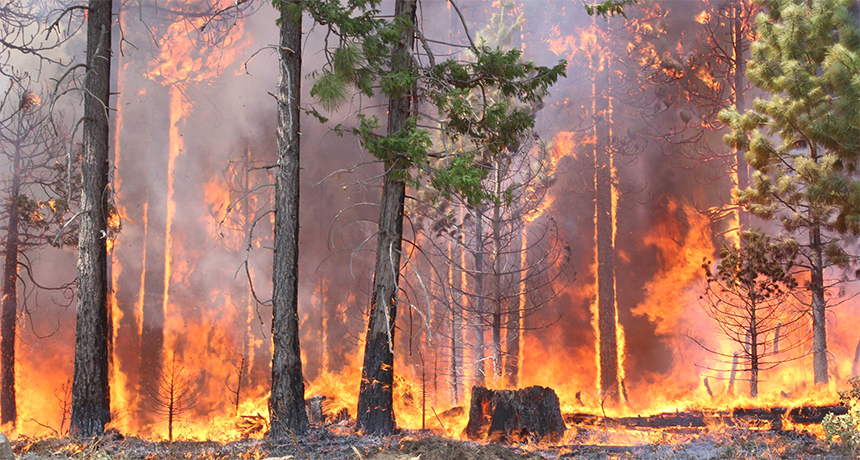Hot summers, wild fires
Rising temperatures and earlier snowmelts in the western United States have intensified forest fires.

Rising temperatures and earlier snowmelts in the western United States have intensified forest fires.
WildandFree/istockphoto
By Emily Sohn
A wood fire can be handy when you’re camping. You can roast marshmallows or stay warm, for example. Forest fires that rage out of control, however, are a big problem.
Wildfires cause hundreds of millions of dollars in damage every year. And the amount of destruction has grown over the last 2 decades, especially in the western United States.
To understand better why the northern Rocky Mountains region has been hit especially hard by wildfires, scientists from the University of Arizona in Tucson looked at weather, snow, and fire records from 1970 to 2003.
Their study showed that, between 1987 and 2003, fires burned an area 6.5 times larger than the area burned between 1970 and 1986. The fire season also started earlier, and its average length increased by 78 days.
Warmer spring and summer temperatures appear to be part of the explanation for this change. The average temperature in the study’s more recent period was 0.87°C higher than it was in the earlier period. And this trend is likely to continue. Experts predict that average summer temperatures may rise between 2°C and 5°C by the year 2050 in western North America.
The timing of snowmelt appears to be another cause of the fire boom. When snow melts early in the season, forests become drier through the summer and catch fire and burn more easily. Western snow packs now typically melt a week to a month earlier than they did 50 years ago, according to recent studies.
Some people have blamed the growing fire risk on policies that allow brush and branches to build up on forest floors. But clearing brush by itself won’t help much if changes in climate are largely responsible for increasingly severe forest fires.
Going Deeper:
Harder, Ben. 2006. The long burn: Warming drove recent upswing in wildfires. Science News 170(July 8):19. Available at http://www.sciencenews.org/articles/20060708/fob1.asp .
You can learn more about wildfires at www.smokeybear.com/wildfires.asp (SmokeyBear.com).
For the latest information on U.S. forest fires, see this site (National Park Service).
Sohn, Emily. 2006. Warmest year on record. Science News for Kids (Feb. 8). Available at http://www.sciencenewsforkids.org/articles/20060208/Note3.asp .
_____. 2005. Arctic algae show climate change. Science News for Kids (March 9). Available at http://www.sciencenewsforkids.org/articles/20050309/Note2.asp .
______. 2004. A change in climate. Science News for Kids (Dec. 8). Available at http://www.sciencenewsforkids.org/articles/20041208/Feature1.asp .
______. 2004. A dire shortage of water. Science News for Kids (Aug. 25). Available at https://www.sciencenewsforstudents.org/article/dire-shortage-water.
______. 2003. Watching for wildfires in Yellowstone. Science News for Kids (Sept. 24). Available at http://www.sciencenewsforkids.org/articles/20030924/Feature1.asp .







